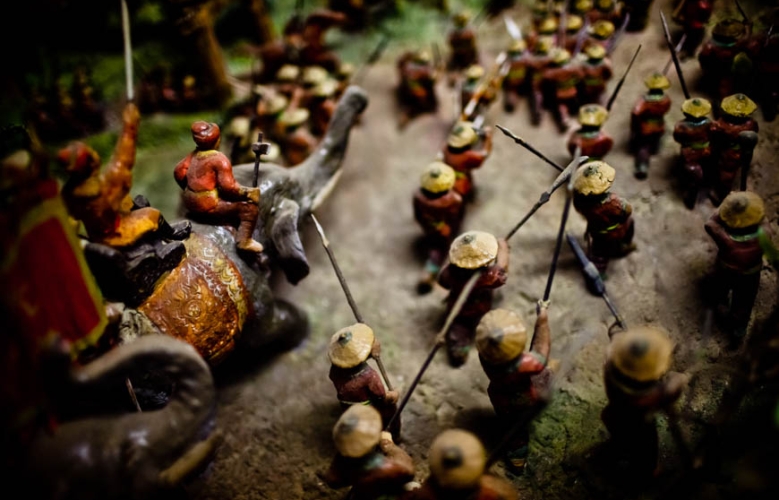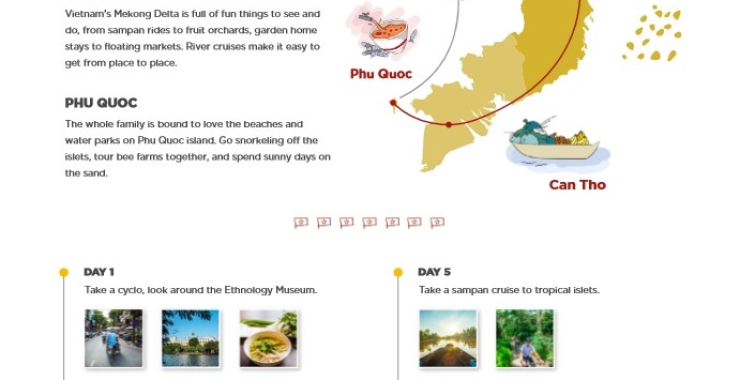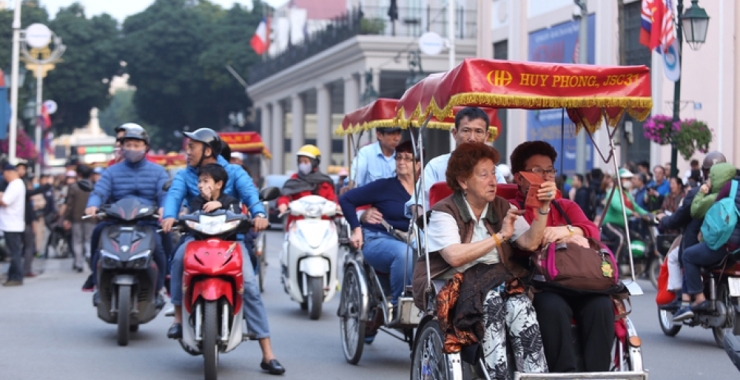Vietnamese history A primer
Vietnam is a country founded in legends. Millennia of invasions and conflicts have shaped Vietnamese culture into what you see today. To help you fully appreciate the attractions and culture you’ll encounter in Vietnam, here’s a brief overview of the notable time periods and figures in the nation’s history, as well as specific suggestions for deeper exploration during your trip.
Dynastic Rules (2nd to 15th centuries)
Throughout its history, many dynasties ruled over Vietnam in between periods of Chinese occupation. There are four main dynasties to note: the Ly, the Tran, the Le, and the Nguyen. First, the Ly Dynasty drove out the Chinese, ending a thousand year-long rule, and set up a centralized the government in Hanoi. Then came the Tran Dynasty, which repelled a Mongol attack in the Red River Delta under the command of general Tran Hung Dao. These two dynasties helped build the foundation of Vietnam, as people with long-standing love for their land.
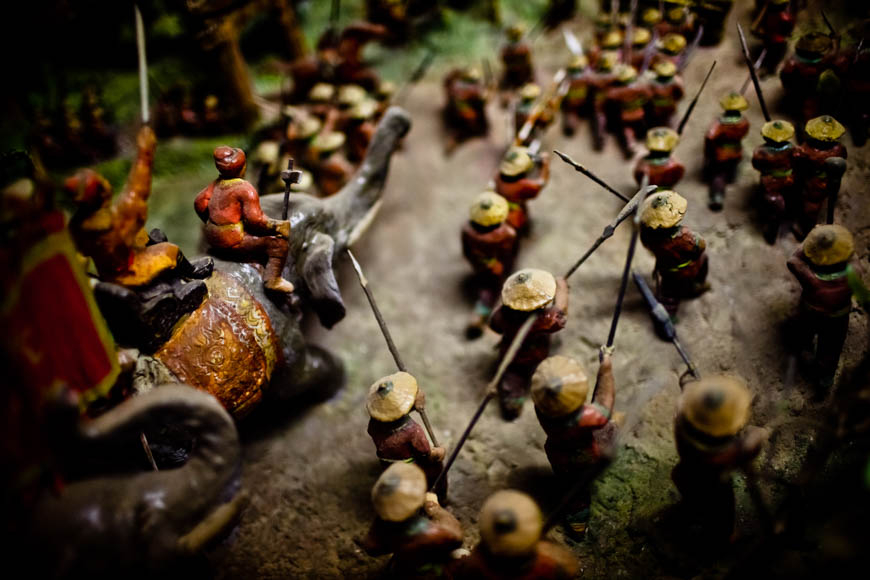
Places to discover:
Thang Long Citadel (Hanoi) – To unearth more about the dynastic history of Vietnam, explore the ruins of this royal enclosure, originally built during the Ly Dynasty.
Temple of Literature (Hanoi) – Take a stroll through the city’s first university, established in 1070. This serene and historic structure is located just west of the Old Quarter.
One Pillar Pagoda (Hanoi) – This sacred monument was erected by an emperor in gratitude for the birth of his son.
The Le Dynasty Pushes South (15th to 17th centuries)
China invaded Vietnam again at the turn of the 15th century, but this period did not last nearly as long as the previous occupation. Le Loi, a wealthy landowner, managed to lead a resistance and reclaim Vietnam. This established the Le Dynasty, which succeeded in expanding southward, gaining control over the former Champa Kingdom. The Cham were an ethnic group from the Indian sub-continent, that lived in central and southern Vietnam from the 2nd century. A strong kingdom with mercantile skills, they were eventually defeated and driven into the depths of the Mekong Delta.
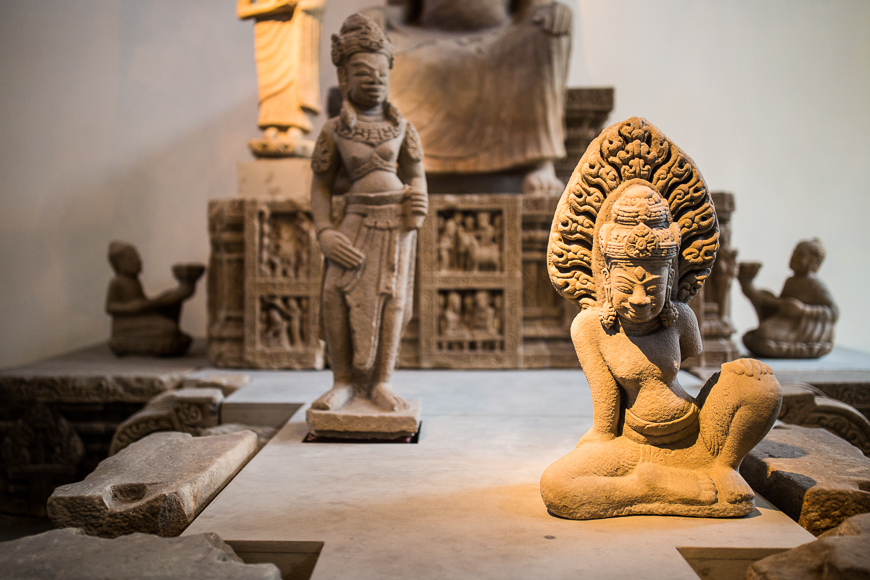
Places to discover:
Cham towers and complexes (Central Vietnam) – Discover the vast and fascinating ruins of My Son sanctuary a few kilometres outside of Hoi An. Visit the Po Nagar towers in central Nha Trang or the Po Shanu towers a short drive from Mui Ne town.
Museum of Cham Sculpture (Da Nang) – Founded during the French colonial rule, this charming building hosts incredible displays of Cham relics and sculptures.
The Last Dynasty (19th Century)
The Nguyens came into power during a divisive civil conflict that had left Vietnam fractured. Under the leadership of Emperor Gia Long, the country was reunited and in 1802, Gia Long constructed a new feudal capital in the city of Hue in Central Vietnam. During the reign of the Nguyen Emperors, French influence in Vietnam grew under the pretext of religious reform and evangelicalism. Eventually, the French established control over the whole of Vietnam, adding the central and northern regions to the rest of their conquests (neighbouring Laos and Cambodia). The last Nguyen emperor, Bao Dai, formally abdicated his throne.

Places to discover:
Imperial City (Hue) – Explore the legacy of the Nguyen Dynasty with a walk around the Hue Citadel and Imperial City, one of Vietnam’s top historical attractions.
Royal Tombs (Hue) – Make time to visit the grandiose tombs of the Nguyen Emperors, each one different from the others, and designed by the Nguyen emperors before their deaths.
French Colonisation (late 19th to early 20th century)
During the French colonisation of Vietnam, the country was divided into three protectorates: Tonkin, Annam and Cochinchine. Throughout French rule, resistance brewed among the Vietnamese. At the turn of the century many notable Vietnamese writers published works calling for solidarity and freedom from colonial rule. These ideas were temporarily silenced but not forgotten. Despite mass arrests by the French, many Vietnamese nationalists used imprisonment to spread their cause and mobilize for the future.
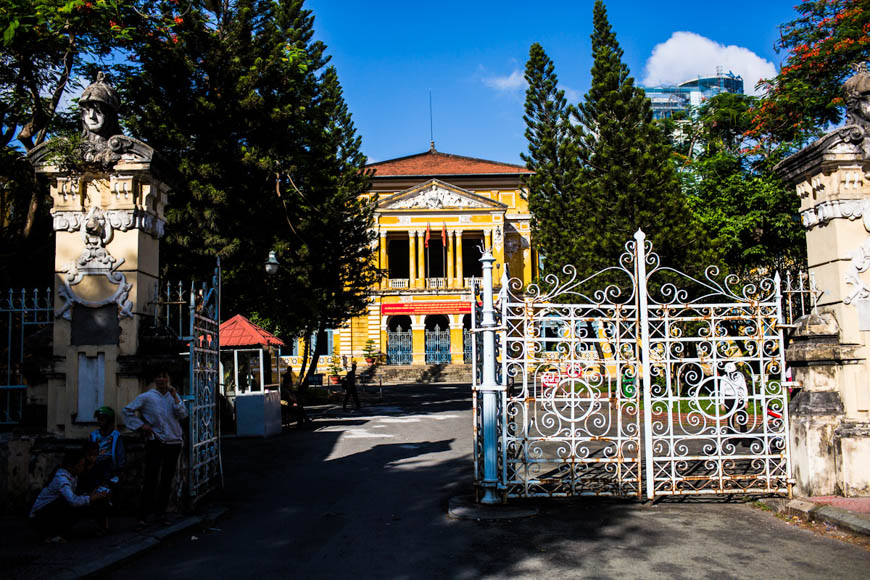
Places to discover:
Con Dao Prison Complex (Con Dao Island) – While enjoying the beaches of Con Dao Island, visit the prison complex to unearth stories about its tragic past.
Hoa Lo Prison (Hanoi) – This urban prison, a short walk from Hoan Kiem lake, was dubbed the ‘fiery furnace’ by locals.
French Quarter (Hanoi) – Take a stroll around Hoan Kiem District to encounter many well-preserved French villas, as well as other architectural relics from the French colonisation, including Long Bien Bridge and the Metropole Hotel.
Invasion to Independence (early to mid-20th century)
When France was occupied by Germany, Japan seized the opportunity to invade Vietnam. This strategic move resulted in Japanese forces taking control of Hanoi in 1940. A year later they moved further south, along the way awakening remaining elements of the Vietnamese resistance and spurring communists and nationalists to band together to form the Viet Minh under Ho Chi Minh. The Viet Minh destabilized the Japanese, and by 1945, Japan surrendered to Allied forces on the same day Ho Chi Minh declared Vietnam an independent nation in Hanoi’s Ba Dinh Square.

Places to discover:
Cannon Fort (Cat Ba) – This hilltop fort was built by the Japanese after their invasion of Cat Ba. Discover more about this event and enjoy the views of the port and jungle below.
Ba Dinh Square (Hanoi) – Visit this iconic square in front of the Ho Chi Minh Mausoleum, before checking out the Presidential Palace and Ho Chi Minh’s stilt house.
The Indochina Wars & Reunification (mid-20th century)
Resistance to French colonial rule came to a head when the First Indochina War began in 1946. The war lasted until a stark defeat at the Battle of Dien Bien Phu. After a ceasefire was signed, Vietnam was divided at the 17th parallel, setting the stage for a war that would capture worldwide attention. American involvement in South Vietnam had begun well beforehand, and as the United States committed more and more forces to the war effort, so did North Vietnam. The Tet Offensive marked a turning point for north, and ultimately American forces retreated from Saigon as the city was taken by North Vietnamese troops on April 30, 1975.

Places to discover:
War Remnants Museum (Ho Chi Minh City) – This museum showcases the harsh reality of the war through the lenses of renowned photographers on both sides of the conflict.
Reunification Palace (Ho Chi Minh City) – Take a stroll around this former seat of power for the Republic of Vietnam. The day the Viet Cong tanks crashed through the gates of the palace marked the end of the war.
Cu Chi Tunnels – These underground tunnels outside Ho Chi Minh City reveal how the Viet Cong guerrilla forces survived and waged war under remarkable conditions.
Doi Moi & Vietnam Now (late 20th century to the present)
After the Second Indochina War, the country went through a period of adjustment and reunification. In 1986, the Vietnamese government introduced its ‘Doi Moi’ (renewal) policy nationwide. These reforms resulted in gradual economic growth, as more and more Vietnamese began to open businesses. Recently, Vietnam has seen a boom in development, and is one of the region’s fastest-growing economies. The country offers is a fascinating mix of old and new, with compelling historical attractions and a deeply rooted sense of appreciation for its past.

